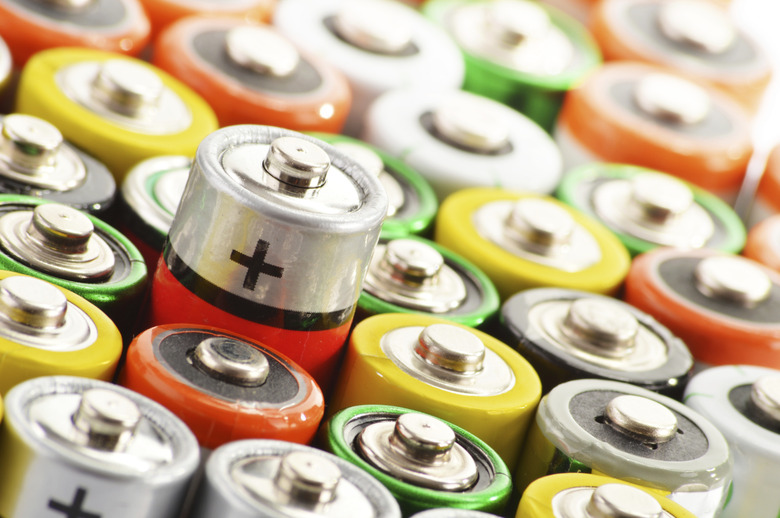Structure Of A Dry Cell
A dry cell is an electrochemical cell that uses a low-moisture electrolyte instead of a liquid electrolyte as a wet cell does. This feature makes the dry cell much less prone to leaking and is therefore more suitable for portable applications. The zinc-carbon battery is one of the most common examples of a dry cell battery.
Carbon Rod
Carbon Rod
The center of a zinc-carbon battery is a rod of pure carbon in the form of graphite. The carbon rod is covered in a mixture of carbon powder and manganese dioxide. It's important to note that the carbon won't play any role in the electrochemical reaction that will produce the current. The purpose of the carbon rod is simply to allow the flow of electrons. The carbon powder will increase the electrical conductivity of the Mn02 and retain the moisture of the electrolyte.
Electrolyte
Electrolyte
The carbon rod is surrounded by an electrolytic paste of ammonium chloride and zinc chloride. This paste is not completely dry, since some liquid is needed for the chemical reactions to occur readily. The ammonium ion will react with the manganese dioxide to carry electrons to the carbon rod. This reaction will produce dimanganese trioxide, water and ammonia as byproducts.
Zinc Sleeve
Zinc Sleeve
The electrolytic paste is encased in a sleeve of zinc metal. The zinc metal will oxidize, causing it to donate two electrons for each zinc atom. These electrons will flow through the electrolyte into the carbon rod to produce an electrical current. This sleeve will get thinner as the zinc oxidizes and the battery will no longer be able to conduct electricity once the zinc sleeve is completely gone.
Additional Components
Additional Components
The top of the battery is covered by a conductive plate so that the carbon rod can make contact with the positive terminal on the outside of the battery. A non-conductive tube forms the sides of the battery and ensures that there is no direct electrical contact between the carbon rod and the zinc sleeve.
Operation
Operation
The electrons flow from the zinc sleeve to the carbon rod, so the zinc sleeve is the anode and the carbon rod is the cathode. This type of dry cell initially produces about 1.5 volts, which decreases as the battery is used. It deteriorates rapidly in cold weather and will begin leaking its contents — primarily ammonium chloride –when the zinc sleeve is consumed.
Cite This Article
MLA
Robinson, Allan. "Structure Of A Dry Cell" sciencing.com, https://www.sciencing.com/structure-dry-cell-5387972/. 24 April 2017.
APA
Robinson, Allan. (2017, April 24). Structure Of A Dry Cell. sciencing.com. Retrieved from https://www.sciencing.com/structure-dry-cell-5387972/
Chicago
Robinson, Allan. Structure Of A Dry Cell last modified March 24, 2022. https://www.sciencing.com/structure-dry-cell-5387972/
